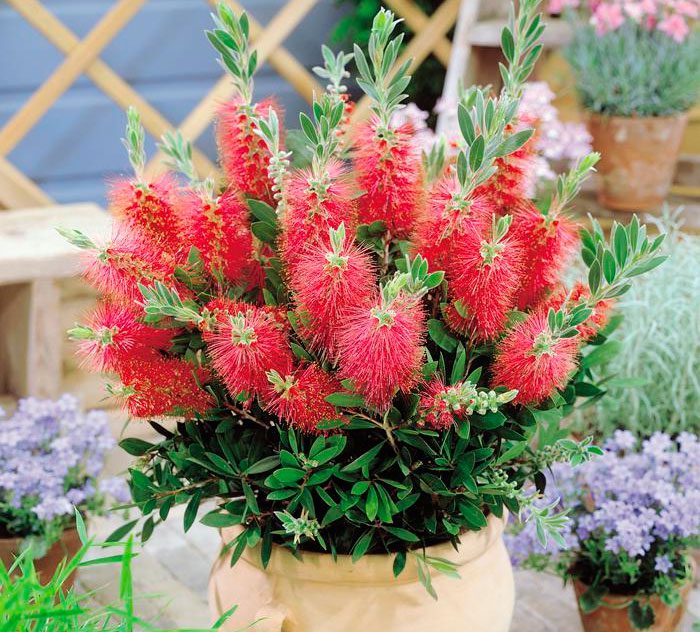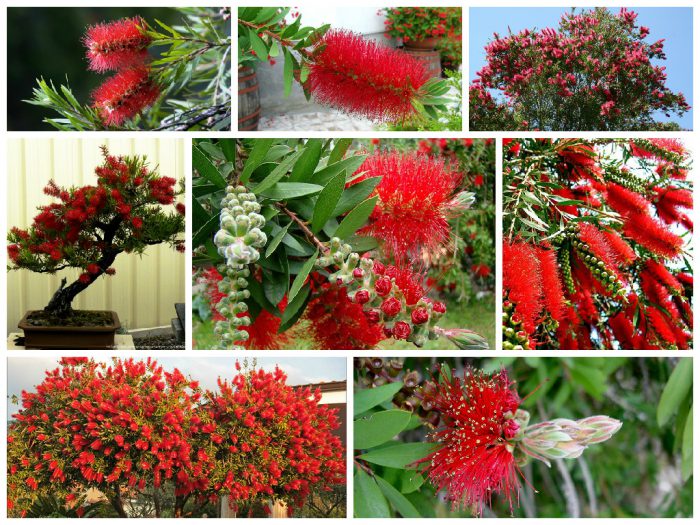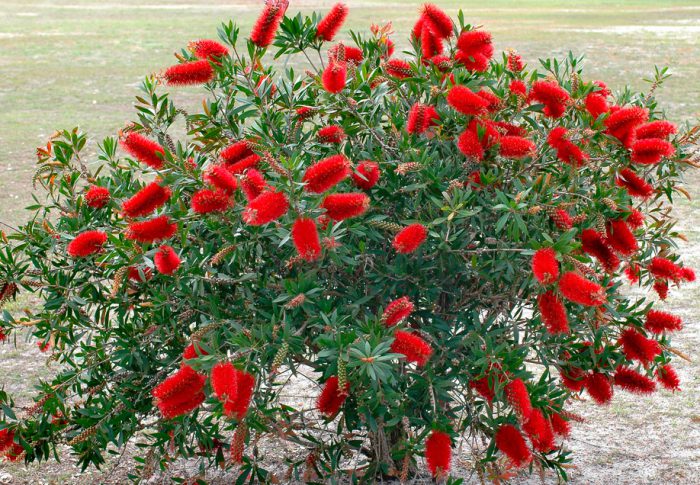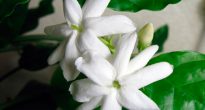An evergreen plant like callistemon looks like a not very large tree or bush with numerous fragrant leaves. Spectacular, unusual and very bright inflorescences, which are very similar to brushes or brushes, will certainly attract the eye.
The beautifully flowering plant Callistemon is directly related to the myrtle family. In natural conditions, it can be found in Australia. This genus includes about 25 species.
As a rule, they grow at home callistemon lemon (Callistemon citrinus), which is a small shrub or tree. Its bare, pubescent stems are colored light brown. The leaves, which have a lanceolate or rounded shape, contain many essential oils. The young leaves are very delicate, and the light green shoots are quite flexible. With age, the leaves darken, become covered with a silvery bloom and become quite tough.
Flowering occurs in the summer. The flowers, collected in axillary ears, have many long stamens, which are colored white, red, yellow, and also pink. This spectacular inflorescence is very similar to a brush. Most florists are especially fond of the Splendens variety. It is a fairly compact bush with bright red inflorescences. The leaves, if rubbed, smell like lemon.
Content
Home care for callistemon
Illumination and location
Callistemon needs bright light, as it is a fairly light-loving plant. But it should be borne in mind that in the hot summer months it should be shaded from the sun's rays. It is recommended to put such a flower on the window sills of windows located in the southern part of the room. If it is placed on the northern windows, the lack of light will have an extremely negative effect on the flower.
In the warm season, it is recommended to move it to fresh air. However, the plant must be accustomed to hot direct sunlight gradually, so that burns do not form on the foliage.
Temperature regime
In the warm season, callistemon feels great at a temperature of 20-22 degrees. With the onset of autumn frosts, it is transferred to the room, since the cold can have a very negative effect not only on the condition of the flower, but also on its development in the future. In the cold season, it should be placed in a fairly cool room (from 12 to 16 degrees).In the case when the plant is in a warmer room during the dormant period, buds do not form and flowering does not occur in spring.
How to water
During intensive growth, abundant watering is required. But it should be borne in mind that you need to water only after the top layer of the substrate dries. In the cold season, watering should be sparse (several times a month).
Air humidity
The plant is favorably influenced by regular air humidification and spraying. Callistemon feels best when the air humidity is 75 percent. In the winter season, it is not recommended to moisturize it, as this can provoke the development of a fungus.
Transplant and soil
While the flower is young, it needs to be transplanted once a year, and an adult - once every 2 or 3 years or as needed (for example, the roots do not fit in the pot). Do not use lime soil for planting. To create a suitable soil mixture, you need to mix peat and sod-leaf soil with sand in a ratio of 2: 2: 1.
Pruning
The flower is cut to form a beautiful bush, as well as in order for it to branch better. He tolerates pruning well.
Reproduction methods
This plant is propagated in spring by cuttings. It is necessary to process the cutting with a growth stimulating agent, and then cover it with a film. It is imperative to place it in a warm place (at least 20 degrees).













